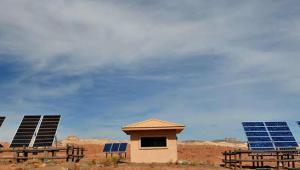Web_GreenhouseGasses_shutterstock_314808188.jpg

Greenhouse gas emissions
The UN Framework Convention on Climate Change (UNFCCC) published its latest biennial report on climate finance flows yesterday. It estimated climate finance increased by 15% in 2013-14 compared to 2011-12, reaching up to $930bn in 2014.
The report was published to coincide with the kick off of an annual, high level climate conference held this year in Marrakesh, Morocco.
At last year’s conference in Paris, known as COP21, leaders from nearly 200 countries agreed a landmark deal to limit climate change. With that agreement now in force, COP22 will focus on how best to implement its conditions and meet its ambitious aims, which include a binding commitment to keep global temperature rises below 2°C.
But that will require a significant increase in funding, said Barbara Buchner, executive director of Climate Policy Initiative. She pointed out that even the UNFCCC’s highest estimate of $930bn, is not enough.
“It is still short of investment levels required to implement actions laid out in countries’ nationally determined contributions (INDCs) [national plans for emissions reduction], let alone levels required to limit temperature rise to two degrees or less,” she told PFI.
She highlighted that building a cleaner and more sustainable world will require “trillions, not billions” in investment.
The cost of implementing the current, insufficient INDCs and building climate-smart infrastructure will top $7.1tn per year alone, the UNFCCC’s report noted.
Buchner pointed out that the capital to achieve this is available, but too often flows to the wrong places. Investments in fossil fuel energy equal $1.6tn annually, with G20 governments handing out almost $450bn per year in subsidies.
“If governments can create the enabling environments necessary to accelerate and mainstream climate-relevant investment, our analysis shows that investment will flow,” Buchner said.
And that could be sorely needed. The UNFCCC’s optimistic estimates for 2014 came close to $1,000bn, but its low estimates are drastically smaller, at $390bn.
This huge range reflects how difficult climate finance can be to measure: a lack of agreed definitions, mismatched methodologies, and a lack of data are just some of the issues plaguing those trying to track global flows.
Some of the increases registered in this year’s UNFCCC report are a result of changes to measurement. Increased data coverage, accuracy and collection identified $12bn from development finance institutions like the World Bank, for example.
The report also found a 50% increase in public climate finance flowing from the developed to the developing world in 2011-12, to $25.4 and $26.6bn in 2013 and 2014 respectively – figures that may prove controversial for some.
Because of their historic responsibility for global emissions, developed countries have promised to deliver at least $100bn every year to help their poorer counterparts adjust to climate change.
Progress towards that figure is hotly contested. The UNFCCC’s report makes use of a figure, based heavily on donors’ own reporting, of $62bn in 2014, or an average of $57bn over the 2013-14 period. This includes public finance from governments and development banks, climate-related export credits and private finance mobilised by public investments.
But other sources, such as the Indian Ministry of Economic Affairs and Oxfam, have come up with quite different numbers: as little as $2.2bn and between $11bn and $21bn respectively. Such analyses don’t include funds that climate justice advocates reject as climate finance, such as market rate loans.
The argument about what counts as climate finance, and how to count it, is complex and far from being solved.
A number of changes have been implemented since the UNFCCC’s last biennial assessment in 2014, and more were recommended in yesterday’s report. But the billion-dollar variation in the UN’s most recent estimates reflects the continuing scale of the problem.
Jan Kowalzig, a climate change advisor for Oxfam, argued there are fundamental problems with the UNFCCC’s method of tracking climate finance. It is “riddled with inconsistencies” and grants “nearly unlimited flexibility to rich countries” as to how and what they count, he said.
“This leads to significant overestimation, for instance where financed programmes support climate action only as one of many objectives. Also, the existing reporting system obscures that the net value of assistance delivered to poor countries is much lower than reported figures at face-value, for instance in the case of concessional loans that, while concessional, still have to be repaid,” Kowalzig told PFI.
He also highlighted that funds to assist developing countries in adapting to climate change, rather than mitigating its effects through, for example, renewable energy, remain “woefully inadequate”.













